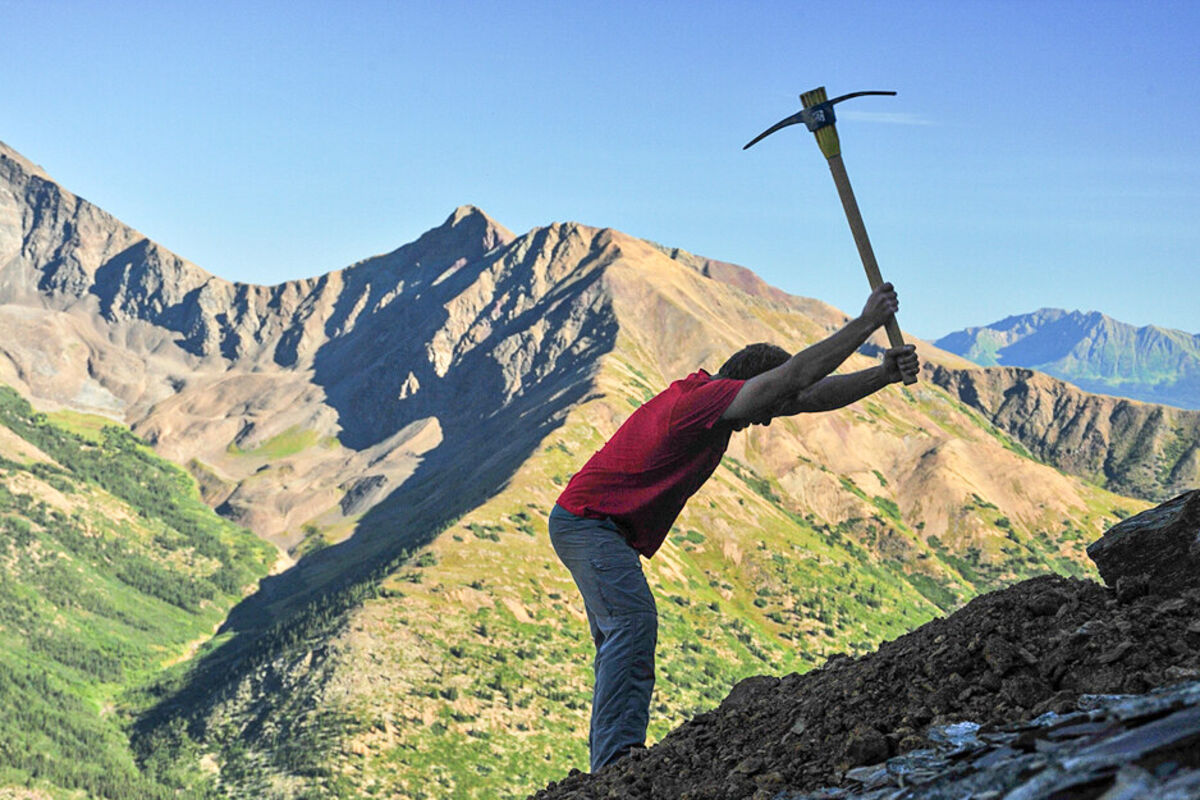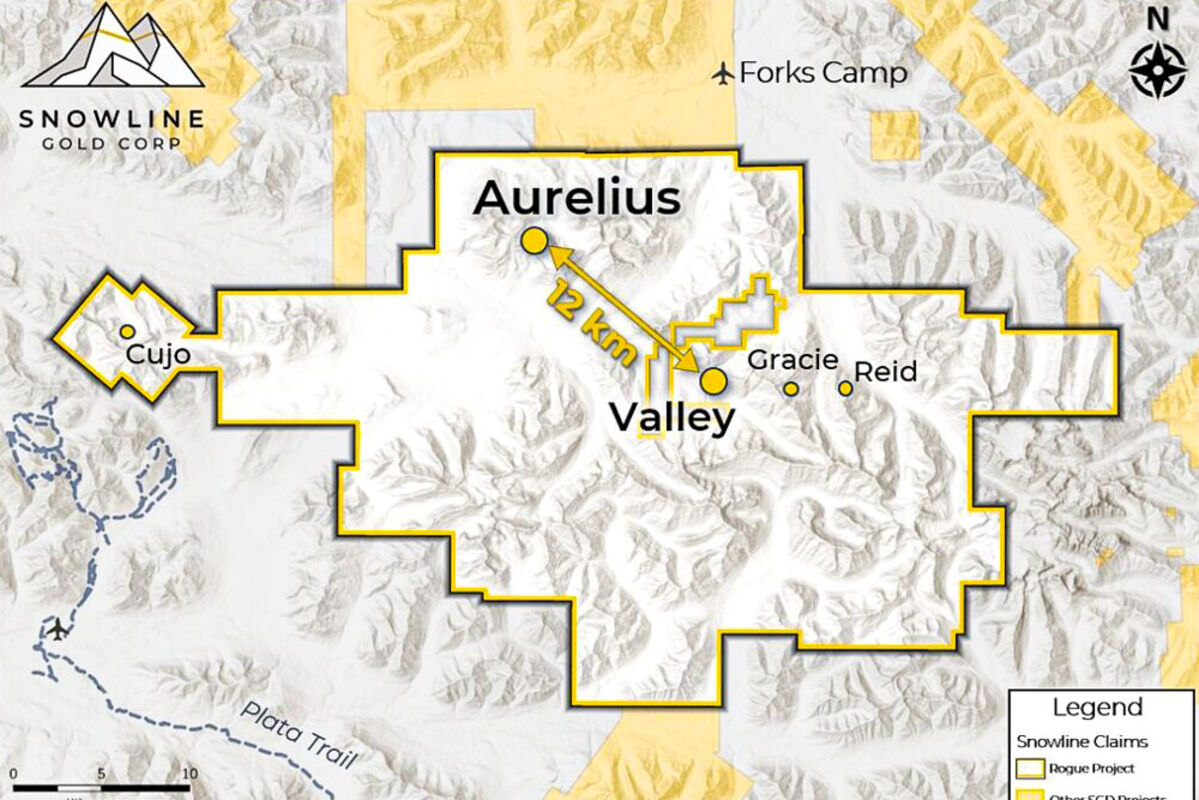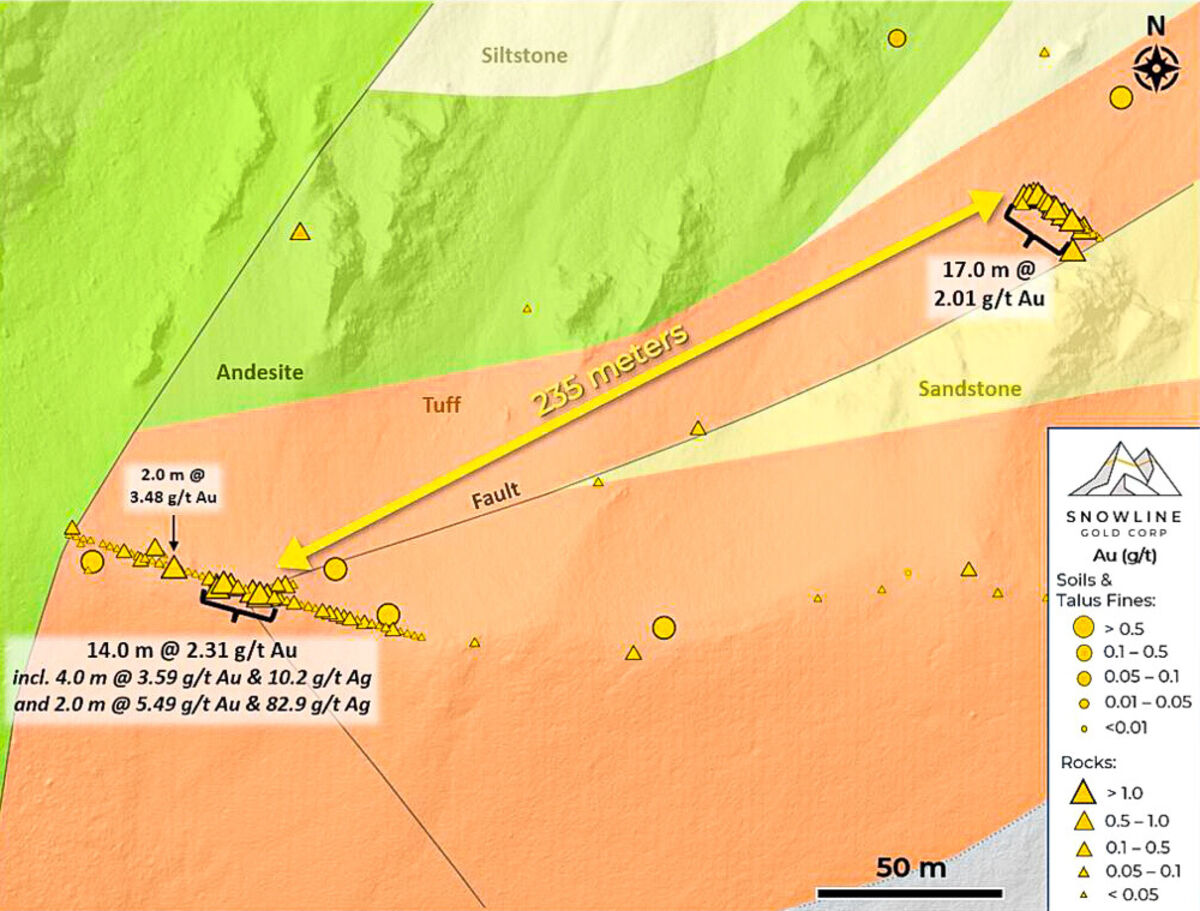Snowline discovers possible Valley twin
North of 60 Mining News - February 21, 2024
Last updated 3/6/2024 at 9:26am
2023 surface sampling returns substantial anomalous gold values, reveals 2,000- by 500-meter reduced-intrusion-related gold system.
Snowline Gold Corp. Feb. 20 reported the discovery of a new 2,000- by 500-meter reduced-intrusion-related gold system just 12 kilometers (7.5 miles) northwest of Valley on the company's flagship Rogue property in Yukon, Canada.
"We are excited to see such strong and consistent gold numbers from the field team's discovery at Aurelius," said Snowline Gold CEO Scott Berdahl.
Analytical results from its 2023 surface exploration program quickly revealed the potential of an open, 2,000-meter-long by up to 500-meter-wide zone of anomalous gold values in talus fines and soils at the new discovery dubbed Aurelius, with concentrations up to 14.9 grams per metric ton gold complemented by anomalous values for reduced intrusion-related gold system (RIRGS) pathfinder elements bismuth and tellurium.
Rock chip samples from outcrops roughly 235 meters apart returned 2.01 g/t gold over 17 meters and 2.31 g/t gold over 14 meters, which demonstrates the potential for significant scale and a local source to the anomaly, the company added.
"The scale, consistency and geochemistry of the surface anomaly – which remains open –demonstrates a strong gold-bearing hydrothermal system driven by a nearby intrusion," said Berdahl. "Thus, we have two immediate exploration targets: country rock-hosted mineralization directly outcropping at Aurelius and driving the gold anomalism over a large area, and the potential for an intact, near-surface Valley-like intrusion-hosted target."
Based on the results from its surface exploration program, Snowline has added Aurelius as a high-priority exploration target at Rogue and has moved it up as a potential drill target for the upcoming 2024 drilling program.
"Valley itself is visible from the new target along a prominent structural corridor that connects the two locations – we consider Aurelius a prospective location for a sibling discovery," finished Berdahl
Little bit about Aurelius
Much like the other targets in the region, historical work at Aurelius is sparse.
Pulling up the records, Snowline found data on the "Horn" mineral occurrence. Located roughly 1,000 meters west of Aurelius, Horn was noted and sampled as a copper occurrence back in 1970.
Later, two soil lines intersected parts of the anomaly, returning high gold values that have yet to be verified by the company. Despite this, Snowline states it had previously identified the broader area west of a large intrusive body of igneous rock (pluton) called the Old Cabin, including Aurelius, as a primary target area for exploration based on historical results as well as magnetic anomalism.
In the end, the discovery of Aurelius marks the delineation of a new RIRGS target at Rogue.
From its sampling program, first-pass surface exploration defined an open 2,000- by 500-meter zone of consistently elevated anomalous gold concentrations. Of the 192 samples collected at Aurelius, 89 returned assays greater than 0.05 g/t gold, with 62 exceeding 0.1 g/t gold.
Snowline says that strong results along the southern, southeastern, and northwestern limits of the survey suggest potential for a larger target area, as do anomalous talus fine results to the southwest of the main anomaly and high gold values in historical stream sediment samples from surrounding drainages.
Tracer elements were found in elevated bismuth (up to 352 parts per million) and tellurium (up to 21.9 ppm) values, along with generally low levels of arsenic – similar to the geochemical signature at Valley – along with elevated anomalous concentrations of tungsten, silver, lead, and copper, often correlating with gold.
Two exposed outcrops at Aurelius were also sampled by continuous rock chip sampling, across distances of 100 meters and 22 meters, respectively.
The outcrops themselves are roughly 235 meters apart, with the 100-meter section – sampled in two-meter subsections – returned a continuously mineralized interval of 14 meters averaging 2.31 g/t gold and 21.1 g/t silver, including four meters averaging 3.59 g/t gold and 10.2 g/t silver; and two meters averaging 5.49 g/t gold and 82.9 g/t silver, along with other zones of elevated gold samples.
The 22-meter section – sampled at one-meter subsections – returned a continuously mineralized interval of 17 meters averaging 2.01 g/t gold, including 2 meters averaging 4.22 g/t gold, and two meters averaging 4.94 g/t gold at the open edge of the overall section.
These rock chip samples were taken by hand using rock hammers and are not representative of drill core samples. True widths for the mineralized intervals are not known, but the samples were oriented nearly perpendicular to north-south and northeast-southwest structures that appear to control mineralization.
The company plans to follow up on the target aggressively this year, with additional surface sampling and mapping, an airborne electromagnetic geophysical survey to assist in targeting, and a potential first phase of drilling.














Reader Comments(0)